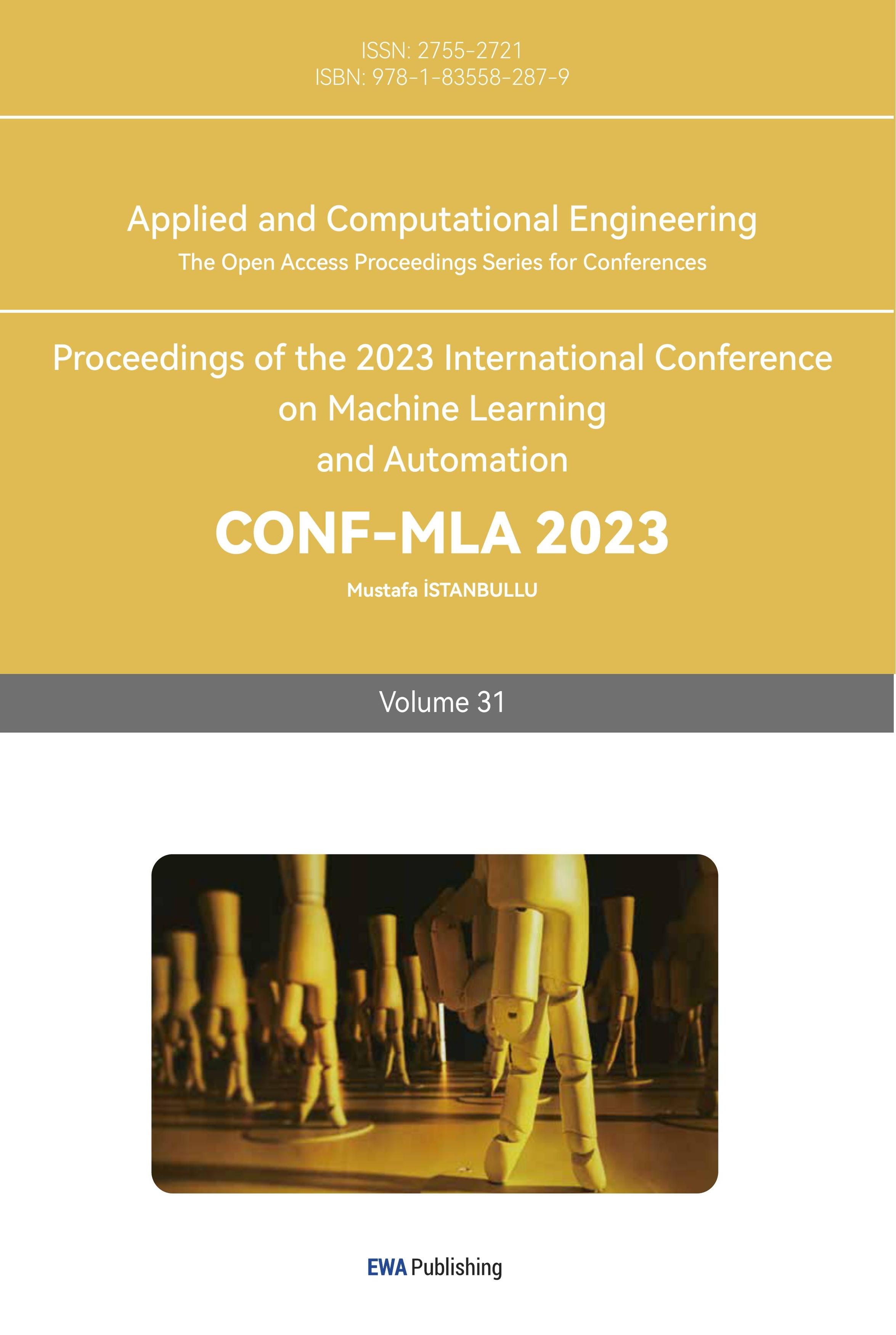References
[1]. Lu X, Teng Z, Fan L. Exploration of the Future Development Trends of Human Machine Interaction in the Intelligent Era [J]. Wireless Internet Technology, 2021,18 (03): 7-8
[2]. Gao Z, Lu J, Peng D. Evaluation method of human-computer interaction design scheme for user perceptual needs [J]. Systems Science and Mathematics, 2023,43 (03): 610-628.
[3]. Chen Y, Wang S. Analysis of visual psychological cognition and emotion design in UI Design [J]. Art and Design Research, 2021, No.94 (02): 74-79.
[4]. Zhang H, Huang H, Li W. A Speech Emotion Database for Emotional Change Detection [J]. Computer Simulation, 2021,38 (09): 448-455
[5]. Shi G, Fan S, Wang L. Research and application of speech and emotion recognition technology in psychological counseling [J]. Yangtze River Information and Communications, 2022,35 (09): 19-22.
[6]. Zhang X, Zhang T, Sun Y, etc. Cascade classified emotional speech recognition based on PAD model [J]. Journal of Taiyuan University of Technology, 2018,49 (05): 731-735.
[7]. Shen Z. Study on emotion recognition based on body movements [D]. University of Chinese Academy of Sciences (Shenzhen Institute of Advanced Technology, Chinese Academy of Sciences), 2020.
[8]. Meng X, Yang W, Wang T. A Review of Emotional Analysis Research Based on Image Text Fusion [J]. Computer Applications, 2021,41 (02): 307-317.
[9]. Li H, Sun X. Emotional+makes intelligent human-computer interaction possible in the future. CHINA SCIENCE DAILY[N], 2021-5-20(3).
[10]. Tao J, Chen J, Li Y. A Review of Speech Emotion Recognition [J]. Signal Processing, 2023,39 (04): 571-587
Cite this article
Shen,Y. (2024). Interaction mode enables user perception recognition and perception optimization: An AI human-computer interaction study. Applied and Computational Engineering,31,57-63.
Data availability
The datasets used and/or analyzed during the current study will be available from the authors upon reasonable request.
Disclaimer/Publisher's Note
The statements, opinions and data contained in all publications are solely those of the individual author(s) and contributor(s) and not of EWA Publishing and/or the editor(s). EWA Publishing and/or the editor(s) disclaim responsibility for any injury to people or property resulting from any ideas, methods, instructions or products referred to in the content.
About volume
Volume title: Proceedings of the 2023 International Conference on Machine Learning and Automation
© 2024 by the author(s). Licensee EWA Publishing, Oxford, UK. This article is an open access article distributed under the terms and
conditions of the Creative Commons Attribution (CC BY) license. Authors who
publish this series agree to the following terms:
1. Authors retain copyright and grant the series right of first publication with the work simultaneously licensed under a Creative Commons
Attribution License that allows others to share the work with an acknowledgment of the work's authorship and initial publication in this
series.
2. Authors are able to enter into separate, additional contractual arrangements for the non-exclusive distribution of the series's published
version of the work (e.g., post it to an institutional repository or publish it in a book), with an acknowledgment of its initial
publication in this series.
3. Authors are permitted and encouraged to post their work online (e.g., in institutional repositories or on their website) prior to and
during the submission process, as it can lead to productive exchanges, as well as earlier and greater citation of published work (See
Open access policy for details).
References
[1]. Lu X, Teng Z, Fan L. Exploration of the Future Development Trends of Human Machine Interaction in the Intelligent Era [J]. Wireless Internet Technology, 2021,18 (03): 7-8
[2]. Gao Z, Lu J, Peng D. Evaluation method of human-computer interaction design scheme for user perceptual needs [J]. Systems Science and Mathematics, 2023,43 (03): 610-628.
[3]. Chen Y, Wang S. Analysis of visual psychological cognition and emotion design in UI Design [J]. Art and Design Research, 2021, No.94 (02): 74-79.
[4]. Zhang H, Huang H, Li W. A Speech Emotion Database for Emotional Change Detection [J]. Computer Simulation, 2021,38 (09): 448-455
[5]. Shi G, Fan S, Wang L. Research and application of speech and emotion recognition technology in psychological counseling [J]. Yangtze River Information and Communications, 2022,35 (09): 19-22.
[6]. Zhang X, Zhang T, Sun Y, etc. Cascade classified emotional speech recognition based on PAD model [J]. Journal of Taiyuan University of Technology, 2018,49 (05): 731-735.
[7]. Shen Z. Study on emotion recognition based on body movements [D]. University of Chinese Academy of Sciences (Shenzhen Institute of Advanced Technology, Chinese Academy of Sciences), 2020.
[8]. Meng X, Yang W, Wang T. A Review of Emotional Analysis Research Based on Image Text Fusion [J]. Computer Applications, 2021,41 (02): 307-317.
[9]. Li H, Sun X. Emotional+makes intelligent human-computer interaction possible in the future. CHINA SCIENCE DAILY[N], 2021-5-20(3).
[10]. Tao J, Chen J, Li Y. A Review of Speech Emotion Recognition [J]. Signal Processing, 2023,39 (04): 571-587









